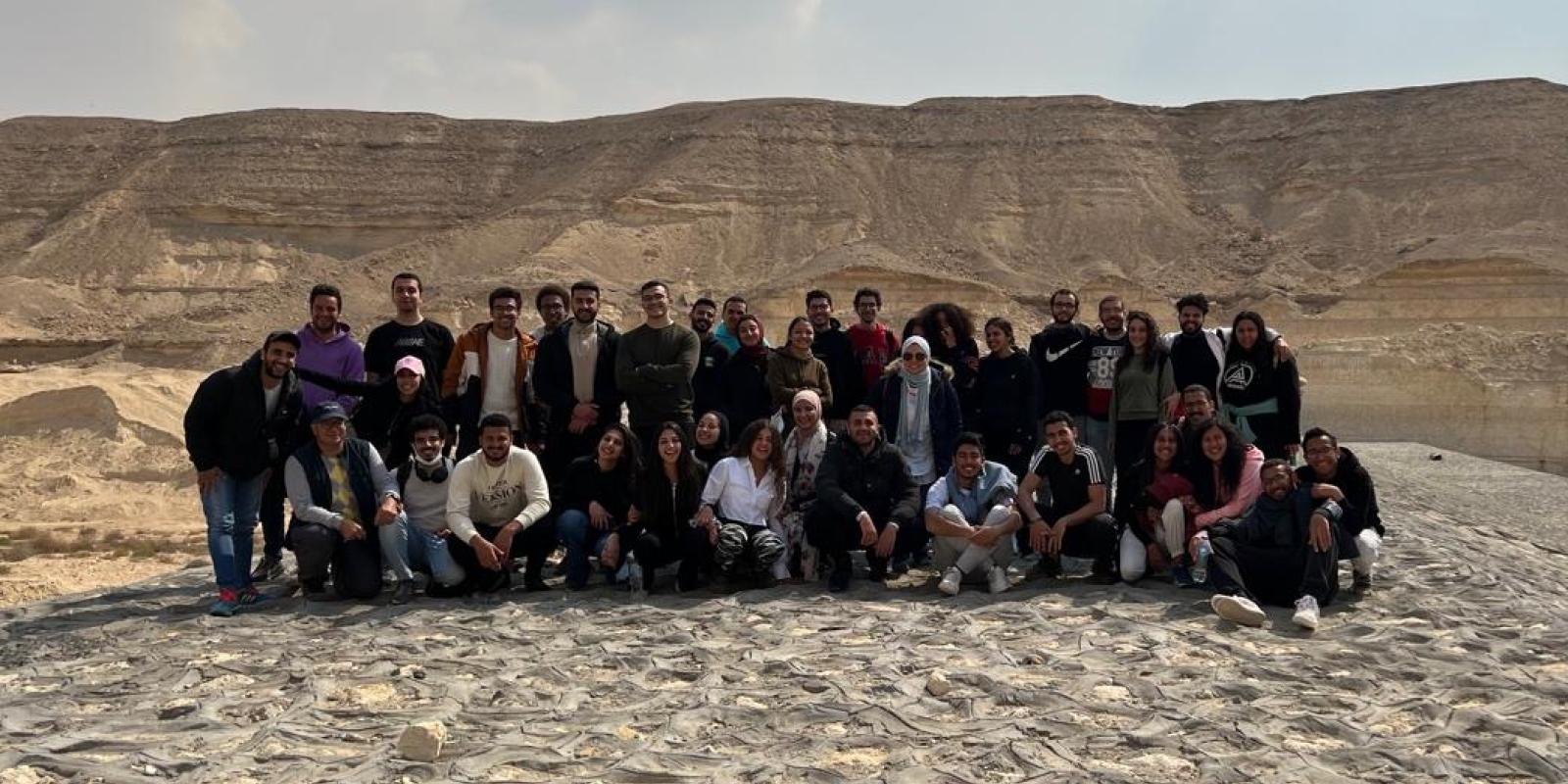
Geology Course Takes Students out of the Classroom and Into the Wild
Students in AUC's Geology for the Engineer course, co-taught by Yasser Elshayeb, professor of Engineering, left the classroom and headed outside this spring to visit two of Egypt's major geological sites: Wadi Degla Protectorate and Wadi Al-Hitan heritage site.
Shayeb, along with co-instructor Heba Zaki, a PhD student in construction engineering at AUC, and TA Mostafa Mohamed, planned the trips with the goal of exposing students to real-life instances of concepts covered in the course.
“Geological field trips have a major impact on learning experience, as students are able to see in reality what they study in classrooms in terms of geological features and structures," Shayeb said.
At Wadi Degla, students were able to identify features such as layers, weathering, erosion, outcrops and normal and reversed faults in the protectorate's Eocene Limestone Valley, which extends over an area of about 10 square kilometers.
The field trip to Wadi Degla lasted around 8 hours, starting from the entrance of the protectorate and ending by the first dam located 3 kilometers from the entrance.
The second trip to Wadi El-Hitan took place on the eve of Ramadan. Amid high temperatures, students were able to observe the area's sandstone hills, which are full of fossils and traces of marine species. They also saw the valley's namesake: A 40-million-year-old fossil of a whale named Basilosaurus, which dates back to the late Eocene, when the area was submerged under the waters of the Tethys Sea.
Maya Ghataty, a construction engineering senior, enjoyed the two excursions. “Both field trips were eye openers to the hidden beauty our country and nature hold,” she said.
Seif Eldin Nazir, another senior in the same discipline, also expressed his appreciation for the trips. "New experiences stretch one's mind to new dimensions that will never shrink back," he said.
In addition to fossil observation, students visited the site's museum and hiked around the tracks.
